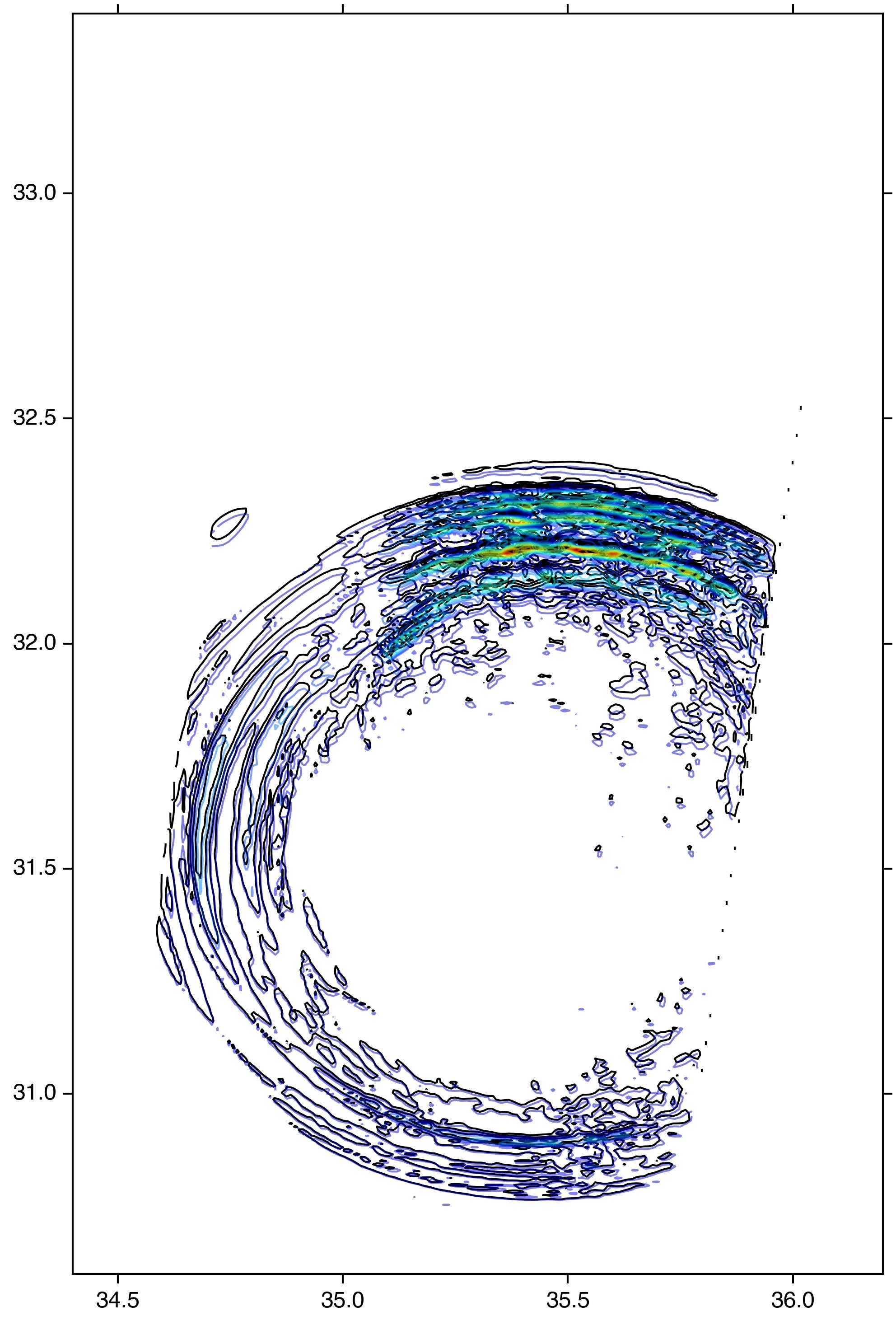在长期忍受scipy.interpolate.griddata极其缓慢的性能之后,我决定放弃{
所以对于上面的例子,上面问题中的那个,你可以得到输入文件here,这是一段需要1.1ms的代码,而在上面的例子中,692ms需要重新划分。在import cv2
new_data = data.T[::-1]
# calculate the pixel coordinates of the
# computational domain corners in the data array
w,e,s,n = map_extent
dx = float(e-w)/new_data.shape[1]
dy = float(n-s)/new_data.shape[0]
x = (lon.ravel()-w)/dx
y = (n-lat.ravel())/dy
computational_domain_corners = np.float32(zip(x,y))
data_array_corners = np.float32([[0,new_data.shape[0]],
[0,0],
[new_data.shape[1],new_data.shape[0]],
[new_data.shape[1],0]])
# Compute the transformation matrix which places
# the corners of the data array at the corners of
# the computational domain in data array pixel coordinates
tranformation_matrix = cv2.getPerspectiveTransform(data_array_corners,
computational_domain_corners)
# Make the transformation making the final array the same shape
# as the data array, cubic interpolate the data placing NaN’s
# outside the new array geometry
mapped_data = cv2.warpPerspective(new_data,tranformation_matrix,
(new_data.shape[1],new_data.shape[0]),
flags=2,
borderMode=0,
borderValue=np.nan)
我看到这个解决方案的唯一缺点是在数据中有一点偏移,如所附图像中不重叠的轮廓所示。重新划分的数据轮廓(可能更精确)为黑色,翘曲透视数据轮廓为“jet”色阶。在
目前,我很好地接受了性能优势的差异,我希望这个解决方案也能帮助其他人。在
应该有人(而不是我……)来改进griddata的性能:)
享受吧!在
版权声明:本文内容由互联网用户自发贡献,该文观点仅代表作者本人。本站仅提供信息存储空间服务,不拥有所有权,不承担相关法律责任。如发现本站有涉嫌侵权/违法违规的内容, 请发送邮件至 举报,一经查实,本站将立刻删除。
如需转载请保留出处:https://bianchenghao.cn/35899.html

